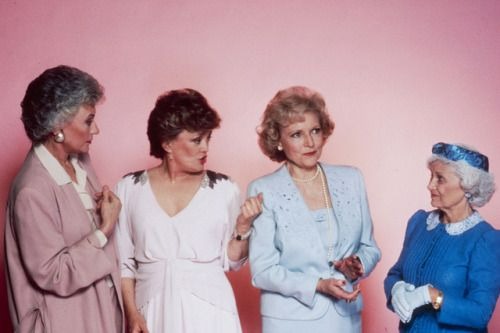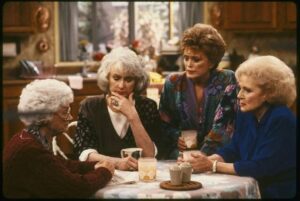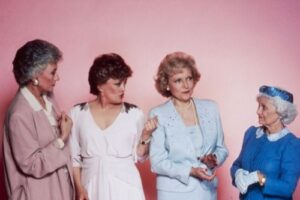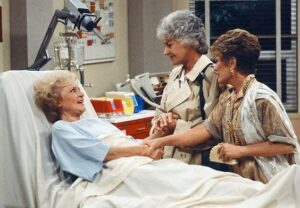
We can’t all depend on adult children to stave off loneliness. College-style living — “minus the keg stands” — can help.
Bea Arthur, Rue McClanahan, Betty White, Estelle Getty in season 3 of “The Golden Girls.”
The folklore of parenthood tells us that if we have children and invest the requisite time, money and love, we can avoid a life of loneliness in our old age. But having children is no guarantee.
Census data show that approximately 85 percent of American women over the age of 50 have children. And yet 43 percent of older people feel lonely, according to a study by researchers at the University of California, San Francisco. Some call loneliness a public health crisis; others say it poses a greater threat than obesity. Research shows that among older adults, loneliness is a predictor of functional decline and death.

We are finally beginning to understand that just as it takes a village to raise a child, it takes a village to shepherd people through their golden years. For some, that village may include adult children. In 2015, the Pew Research Center found that 58 percent of Americans with parents over 65 help them with errands and other chores.
But we shouldn’t assume that adult children will always be available to care for an aging population, especially as the number of older Americans without children or other family on whom they can rely grows. A 2015 report by the AARP predicts a steep decline in the ratio of potential family caregivers — those age 45 to 64 — to people 80 years old and beyond. In 2015, there were 6.8 potential family caregivers for every person 80 and older; by 2050 that ratio is expected to fall to less than 3 to 1.
More and more people I’ve talked to are looking for creative solutions. A 41-year-old teacher told me: “I’ve talked with one of my girlfriends. She also doesn’t have children, and we say maybe we’ll live together.”
Sign up for the Opinion Today newsletter Get expert analysis of the news and a guide to the big ideas shaping the world every weekday morning. Get it sent to your inbox.
They are on to something. “The Golden Girls” living arrangement is increasingly popular. In these settings, people usually purchase a home together and share expenses, chores and other activities. Housemates serve to combat loneliness and reduce the cost of living. Unlike more traditional retirement communities, these houses are set in neighborhoods that include people of all ages and are often more affordable than traditional retirement communities.

As an article on realtor.com put it, “To those who are joining the geriatric group-living parade, it’s a bit like college living, 50 or 60 years later — minus the keg stands.”
In 2014, Bonnie Moore, a retired lawyer, founded the Golden Girls Network, a national roommate matching network for “single mature women and men” wishing to form shared-living senior communities. For $39, seniors could sign up for six months of unlimited searching on the site, which matched homeowners with those seeking homes (and included background checks). Ms. Moore later published a guide for those interested in starting their own “Golden Girls home.”
In 2017, the Cohousing Association of the United States founded a new initiative, Aging in Cohousing, which aids those wishing to form or join a cohousing community and provides information to those considering cohousing.
Editors’ Picks
The Culture Warriors Are Coming for You Smart People
Guarding Royal Families for $1,000 a Day: Inside Executive Protection Jobs
They Built Three Homes Together. Now She Must Do It Alone.

Another model is multigenerational cohousing, in which apartments or other multiunit buildings mix older residents with younger people. The younger people may be able to assist the older ones in times of need, and both generations have the chance to enjoy the companionship provided by living communally. There are preschools located in nursing homes and artists-in-residence programs in which younger artists receive housing in retirement communities in exchange for sharing their talents with residents.
According to a 2018 report released by Generations United and the Eisner Foundation, 85 percent of Americans say that if they need care in their old age, they would prefer a setting with opportunities for intergenerational contact over one with only a single age group. Researchers from Ohio State University surveyed 105 intergenerational programs across the United States, and they concluded that such programs reduce ageism and loneliness, while increasing older people’s level of engagement and younger people’s empathy.
Another study by researchers from Ohio State University found that 79 percent of Americans believe that the government should invest in programs that bring older adults together with younger people
